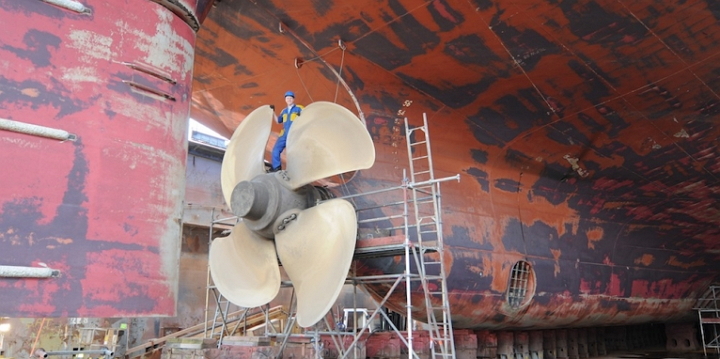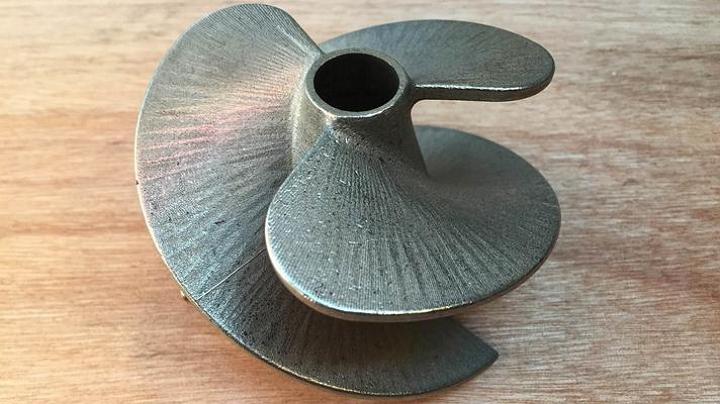 The Port of Rotterdam is Europe’s largest sea port, and it boasts excellent accessibility for sea-going vessels, intermodal connections and the 180,000 people who work for and in the surrounding port and industrial area.
The Port of Rotterdam is Europe’s largest sea port, and it boasts excellent accessibility for sea-going vessels, intermodal connections and the 180,000 people who work for and in the surrounding port and industrial area.
The Port of Rotterdam was once the world’s busiest port before it was recently overtaken by Singapore, and then Shanghai, and it now covers some 41 square miles and stretches across 25 miles.
The port has a long history which reaches back into the 14th century, and as the city of Rotterdam has developed into a major harbor city, the port expanded from a series of docks along the banks of the Nieuwe Maas river. In the 19th century, the port expanded in response to the fact that connections between Rotterdam and the North Sea were lacking, a situation which meant ships were forced to sail around the island of Voorne-Putten to reach the sea.
Now a project called 3D Printing of Maritime Spare Parts by a consortium of 27 marine-related companies has been formed by InnovationQuarters, Havenbedrijf Rotterdam, RDM Makerspace and AEGIR-Marine to share their expertise.
The pilot program will examine some 30 selected spare parts, four of which were chosen for 3D print production. The consortium says the printing will be done during July and August, and a part testing project is slated to begin in September.
 The four specific components will be evaluated as to their suitability for printing, to determine what advantages 3D printing provides and to assess the economic viability of printing maritime end-use parts.
The four specific components will be evaluated as to their suitability for printing, to determine what advantages 3D printing provides and to assess the economic viability of printing maritime end-use parts.
“Innovation is one of our priorities, and we were already exploring 3D printing for our business. Joining this consortium was therefore a natural thing to do,” says Robert van Herwaarden, the General Manager of AEGIR-Marine Production. “I found that the selection of the final four products was a learning process by itself. What can be 3D printed? When is it profitable and what are the benefits?”
AEGIR-Marine provides stern seal and propulsion services, and they are an independent builder of services and spares for all major maritime propulsion systems.
 He says the partners will also build a database of marine products suitable for 3D printing, and they plan to use it as a guide for such companies when they seek to select materials and manufacturing and machining methods for their spare parts. The initial results of the study and the 3D printed spare parts will be unveiled during Rotterdam Port Days in early September, and the final results will be presented during the 3D Print Conference in Rotterdam.
He says the partners will also build a database of marine products suitable for 3D printing, and they plan to use it as a guide for such companies when they seek to select materials and manufacturing and machining methods for their spare parts. The initial results of the study and the 3D printed spare parts will be unveiled during Rotterdam Port Days in early September, and the final results will be presented during the 3D Print Conference in Rotterdam.
Do you know of any other projects meant for maritime applications which use 3D printing? Let us know in the Maritime 3D Printing forum thread on 3DPB.com.
Subscribe to Our Email Newsletter
Stay up-to-date on all the latest news from the 3D printing industry and receive information and offers from third party vendors.
You May Also Like
Precision at the Microscale: UK Researchers Advance Medical Devices with BMF’s 3D Printing Tech
University of Nottingham researchers are using Boston Micro Fabrication‘s (BMF) 3D printing technology to develop medical devices that improve compatibility with human tissue. Funded by a UK grant, this project...
3D Printing Webinar and Event Roundup: April 21, 2024
It’s another busy week of webinars and events, starting with Hannover Messe in Germany and continuing with Metalcasting Congress, Chinaplas, TechBlick’s Innovation Festival, and more. Stratasys continues its advanced training...
3D Printing Webinar and Event Roundup: March 17, 2024
It’s another busy week of webinars and events, including SALMED 2024 and AM Forum in Berlin. Stratasys continues its in-person training and is offering two webinars, ASTM is holding a...
3D Printed Micro Antenna is 15% Smaller and 6X Lighter
Horizon Microtechnologies has achieved success in creating a high-frequency D-Band horn antenna through micro 3D printing. However, this achievement did not rely solely on 3D printing; it involved a combination...































